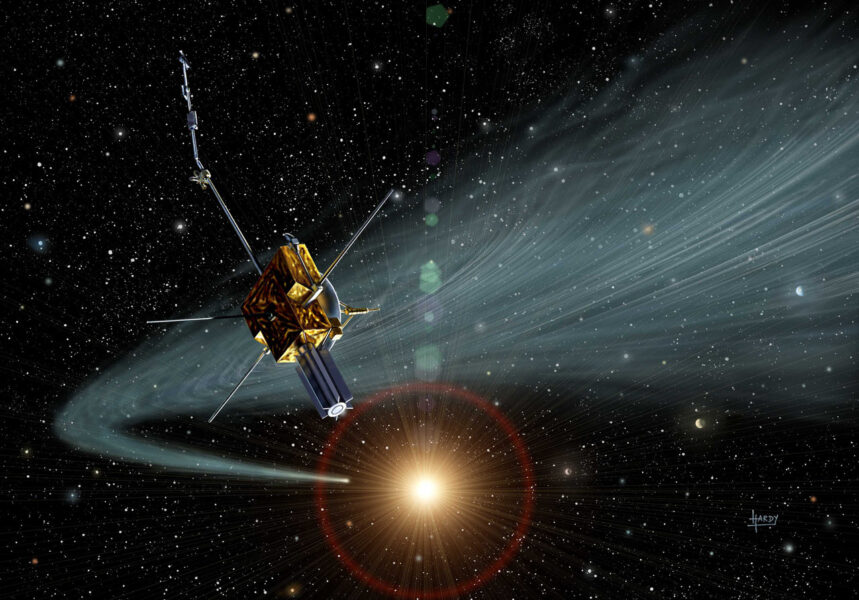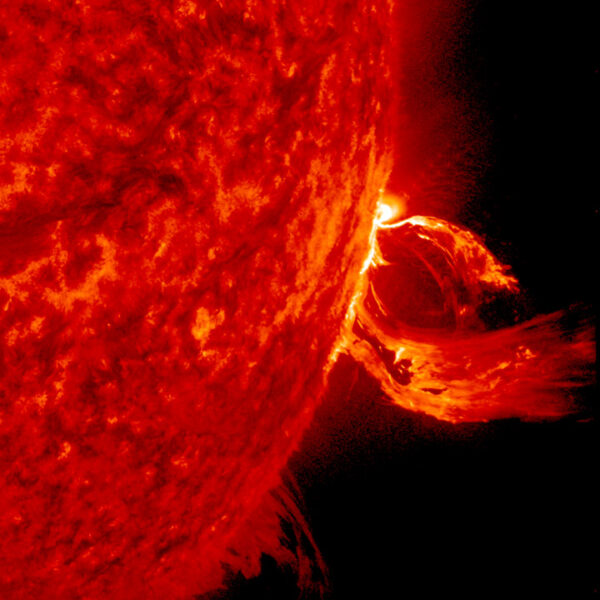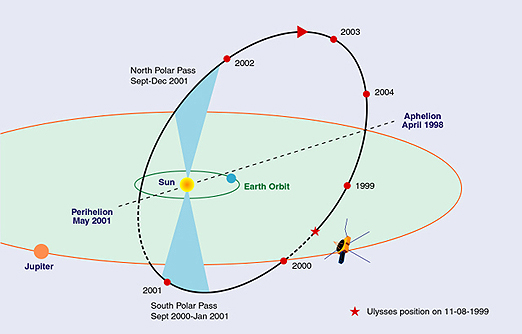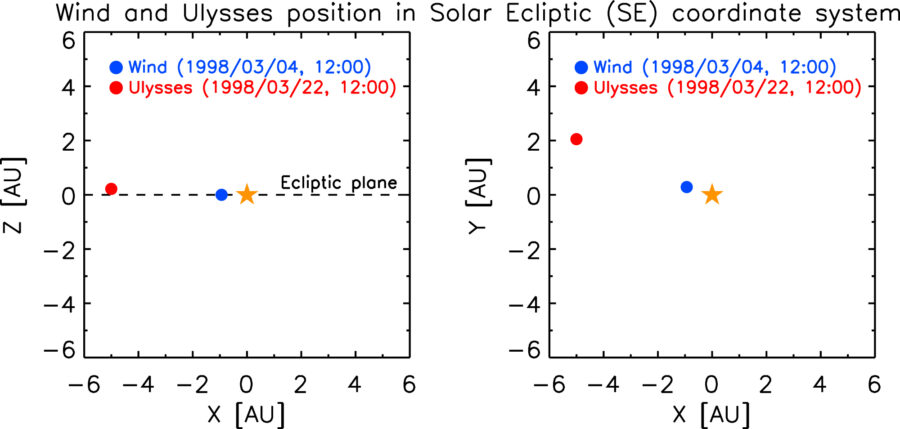New analysis of a coronal mass ejection detected by the alignment of two spacecraft reveals that it experienced erosion and restructuring as it traveled.

European Space Agency / David Hardy
In March of 1998, a mass of plasma erupted from the Sun. As it sped out into interplanetary space, two spacecraft were perfectly situated to measure this dramatic cloud. Now, more than 20 years later, we’re still benefitting from their fortuitous alignment.
Interplanetary Journeys

NASA
Coronal mass ejections (CMEs), violent releases of plasma and magnetic fields from the Sun’s atmosphere, are by no means rare! When the Sun is at its most active, several CMEs can occur each day — and some of these ejections are so energetic that they travel great distances through our solar system, carrying embedded clouds wrapped in helical magnetic fields.
But what happens to these magnetic clouds as they journey through interplanetary space? Do they expand, unperturbed, as they travel? Or do they interact with other magnetic solar phenomena — like additional CMEs, or the solar wind — and change their shapes or behaviors?
A Fortuitous Alignment

NASA
These questions are challenging to answer due to the difficulty of examining CMEs in interplanetary space. To gain a better understanding of CME evolution, we need repeated in situ measurements of the same propagating magnetic cloud — first when it’s close to the Sun, and again when it’s traveled farther out into the solar system.
While a number of past and current spacecraft have the ability to measure the properties of the solar wind and magnetic fields around them, the vast majority of these spacecraft orbit close to the Sun (at or within 1au distance). In 1998, however, we got lucky: the only wide-orbit spacecraft devoted to solar wind studies, Ulysses, just happened to be radially aligned with a close-in spacecraft, Wind, when a CME was launched in their direction.
The two spacecrafts’ observations of the resulting magnetic cloud have now been re-examined in a study led by Daniele Telloni (INAF Astrophysical Observatory of Turin, Italy).
Colliding Clouds

Telloni et al. 2020
The magnetic cloud contained in this interplanetary CME arrived at Wind, which orbits at 1 au, in early March of 1998. 18 days later, the cloud arrived at Ulysses, which happened to be in line at the time at 5.4 au (out at Jupiter’s orbit). Telloni and collaborators conducted new analysis of Ulysses’s and Wind’s combined data sets for the interplanetary magnetic field and the solar wind plasma during the magnetic cloud’s passage of the two spacecraft.
The authors’ work shows that the cloud did not travel undisturbed through the space between Earth’s and Jupiter’s orbits, but instead experienced significant erosion and restructuring along the way, likely due to interaction with another magnetic cloud from a previous solar ejection. This erosion stripped away some of the helical magnetic field encasing the cloud, converting stored magnetic energy into kinetic energy as magnetic field lines rearranged at the interface between the two clouds.
This valuable insight was made possible due to two spacecraft being aligned at the right time — so what are the chances of similar good luck in the future? With the wealth of recently launched planetary and solar missions like BepiColombo, Solar Orbiter, and Parker Solar Probe, odds are good for future radial alignments that will allow us to further measure ejections from the Sun.
Citation
“Magnetohydrodynamic Turbulent Evolution of a Magnetic Cloud in the Outer Heliosphere,” Daniele Telloni et al 2020 ApJL 905 L12. doi:10.3847/2041-8213/abcb03
This post originally appeared on AAS Nova, which features research highlights from the journals of the American Astronomical Society.
 1
1









Comments
Steven Yaskell
February 20, 2021 at 6:22 pm
They're CMEs and then, they're CMEs. In weaker solar times (like now) "interplanetary shocks" or, so-called Co-rotating Interaction Regions (CIRs) - happening when stronger solar flares (perhaps along with CMEs) buckle against slower, already released solar flare energy - then co-rotate/interact or both with particles filling the entire heliosphere. (The heliosphere encompasses the entire Solar System.) So it just may be that magnetized particles are building up without relent at present in near space between the Sun and Earth’s uppermost atmosphere due to continued weaker solar activity, the Earth's magnetic sheath weaker right along with a weaker sun, letting them into the Earth's strata via Earth's ionosphere. In the 1970s, upper atmospheric studies listed by Leif Svalgaard involving solar research pointed out that, in Earth's magnetic sector boundary, overloads of certain particles in the normal c. 7 day magnetic polarity shift effected weather patterns for the high or low when certain abundances of A or B particles were naturally introduced.
Svalgaard, L, Solar Activity and the Weather, SUIPR Rpt. N0. 526, Institute for Plasma Research, Stanford University, Ca. 1973
You must be logged in to post a comment.
You must be logged in to post a comment.